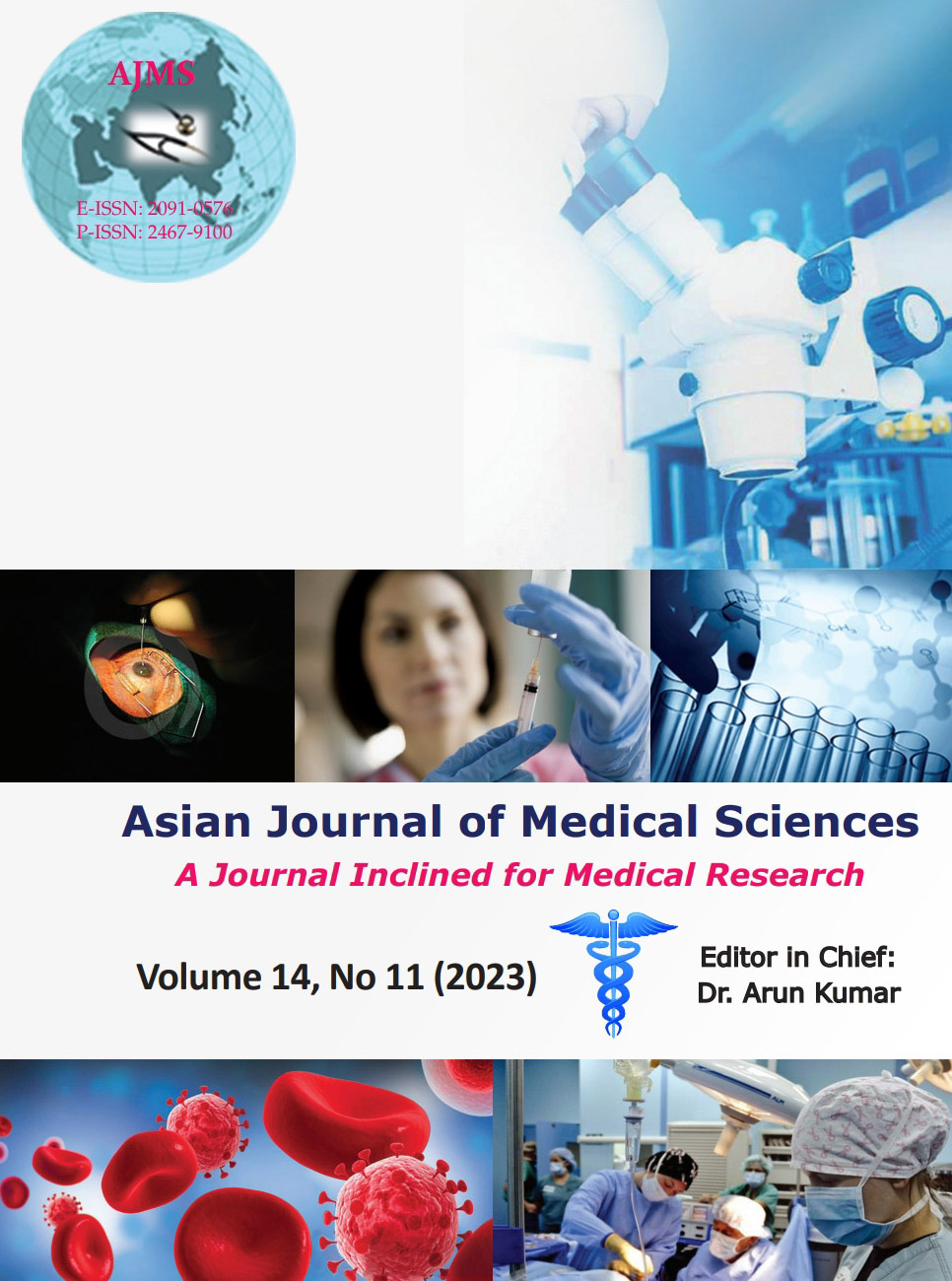Prevalence of acute respiratory infections among under-five children and its association with sociodemographic factors and housing conditions in a rural area of the Bundelkhand region: A cross-sectional study
Keywords:
Acute respiratory infections; Prevalence; Educational status; Housing conditionsAbstract
Background: Acute respiratory infections (ARIs) are a significant public health concern in India, accounting for 15–30% of all fatalities among children younger than 5 years.
Aims and Objectives: This study estimated the prevalence of ARI and its association with sociodemographic variables and housing conditions in under-five children in rural Jhansi, Bundelkhand region.
Materials and Methods: This community-based cross-sectional analytical study was conducted in the selected Anganwadi Centers in Badagaon Block, Jhansi. Data for sociodemographic factors and housing conditions were collected by interviewing parents or caretakers of under-five children using a semi-structured predesigned and pretested pro forma during a house-to-house visit. The sociodemographic factors considered were the educational status of the parents, occupation of the father, religion of the child, socioeconomic class of the family, age of the child, type of family, and sex of the child. The parameters of housing conditions evaluated were overcrowding, ventilation type of chulha, and type of house.
Results: The overall prevalence of ARI was found to be 48.88%. Significant sociodemographic factors for ARIs have been the educational level of the mother (χ2=18.69, P<0.001) and father (χ2=12.02, P<0.001), the working status of the fathers (χ2=17.95, P=0.001), the type of family (χ2=23.88, P<0.001), and the gender (χ2=16.57, P<0.001) of the studied children and the significant environmental housing factors associated with ARIs were overcrowding (χ2=13.61, P≤0.001), ill-ventilated houses (χ2=54.63, P<0.001), type of chulha (χ2=164.31, P≤0.001), and type of house (χ2=4.69, P=0.030).
Conclusion: The prevalence of ARI as observed in this study is noteworthy. The study’s findings underscore the significance of enhancing sociodemographic indicators and housing conditions as effective measures for preventing ARI in children.
Downloads
Downloads
Published
How to Cite
Issue
Section
License
Copyright (c) 2023 Asian Journal of Medical Sciences

This work is licensed under a Creative Commons Attribution-NonCommercial 4.0 International License.
Authors who publish with this journal agree to the following terms:
- The journal holds copyright and publishes the work under a Creative Commons CC-BY-NC license that permits use, distribution and reprduction in any medium, provided the original work is properly cited and is not used for commercial purposes. The journal should be recognised as the original publisher of this work.
- Authors are able to enter into separate, additional contractual arrangements for the non-exclusive distribution of the journal's published version of the work (e.g., post it to an institutional repository or publish it in a book), with an acknowledgement of its initial publication in this journal.
- Authors are permitted and encouraged to post their work online (e.g., in institutional repositories or on their website) prior to and during the submission process, as it can lead to productive exchanges, as well as earlier and greater citation of published work (See The Effect of Open Access).




